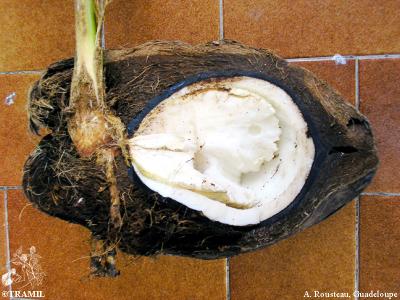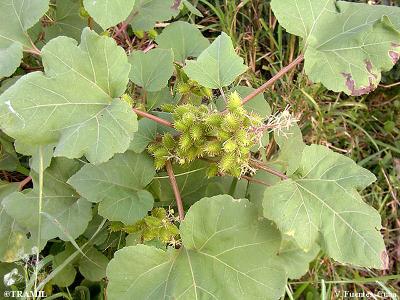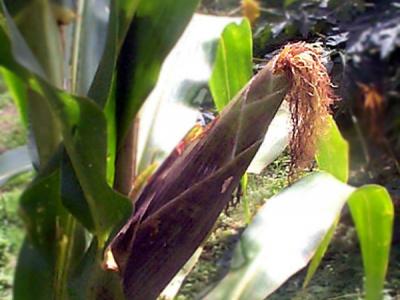(In territories with significant traditional TRAMIL use)
Nicaragua:
- 'kukus
St Vincent and Grenadines:
- coco-tree
- coconut tree
Dominica:
- coco-tree
- coconut tree
Guatemala:
- cocotero
Honduras:
- cocotero
Dominican Republic:
- cocotero
fruit water, natural, orally1-2
According to available information:
Uses for asthma and joint pain (arthritis) are classified as REC based on the significant traditional use documented in the TRAMIL surveys and the validation and toxicity studies.
If deterioration of the patient is observed or if the asthma symptoms persist for more than 2 days or the asthma attacks for more than 1 hour, seek medical attention.
Due to the health risk of asthma, an initial medical assessment is recommended. The use of this resource must be considered complementary to medical treatment, unless contraindicated.
The use for flu (fruit) is classified as REC based on the significant traditional use documented in the TRAMIL surveys, the toxicity studies and the scientific information published.
If deterioration is observed in the patient or the flu symptoms persist for more than 7 days, or the boils for more than 5 days, seek medical attention.
The use for burns is classified as REC based on the significant traditional use documented in the TRAMIL surveys and the toxicity studies.
Traditional use should be limited to superficial burns (epidermal damage) that are minor (less than 10% of the body surface) and located outside high-risk areas such as the face, hands, feet and genitals.
All topical application must follow strict hygiene measures in order to prevent contamination or additional infection.
The use for kidney stones, kidneys and urinary infections is classified as REC based on the significant traditional use documented in the TRAMIL surveys and the scientific information published.
If deterioration is observed in the patient or the urinary symptoms persist for more than 3 days, seek medical attention.
Due to the health risk of urinary infections and kidney stones, an initial medical assessment is recommended. The use of this resource must be considered complementary to medical treatment, unless contraindicated.
Not for use during pregnancy, breastfeeding or in children under 5 years.
The fruit (seed, mesoderm) and juice (water) of Cocos nucifera is a food of relatively widespread human consumption.
For asthma:
TRAMIL Work37
drink 1 teaspoon (5 millilitres) of coconut oil a day for 15 to 21 days.
For kidney stones or urinary infection:
drink 1 cup (250 millilitres) of fresh coconut water, 4-6 times a day37.
For flu and joint pain (arthritis):
apply a sufficient amount of coconut oil locally to cover the area, rubbing the chest in cases of flu or massaging the joint in cases of joint pain (arthritis), 3 to 4 times a day.
For boils (furuncles) or burns:
wash the injury with boiled water and soap, apply a sufficient amount of the coconut oil to cover the affected area twice a day. Cover with a dressing or clean cloth and change every 12 hours.
For diarrhoea:
prepare a decoction with 30 grams of leaves in 4 cups (1 litre) of water, boil for 10 minutes in an closed vessel. Leave to cool, strain (filter) and drink 4 cups a day. The consumption of coconut water is recommended for remineralisation in cases of diarrhoea.
Preparations must never be stored for more than 24 hours, even if refrigerated.
1 GERMOSEN-ROBINEAU L, GERONIMO M, AMPARO C, 1984
Encuesta TRAMIL. enda-caribe, Santo Domingo, Rep. Dominicana.
2 LAGOS-WITTE S, 1988-89, 1996
Encuesta TRAMIL. Laboratorio de Histología Vegetal y Etnobotánica, Departamento de Biología, Universidad Nacional Autónoma de Honduras UNAH, Tegucigalpa, Honduras.
3 AKER CH, GARMENDIA M, DEVES R, FERNANDEZ P, FRITHZ E, HERNANDEZ M, SIMEON A, 2003
Encuesta TRAMIL-GEF Bosawas. Departamento de Biologia, Facultad de Ciencias, Universidad Nacional Autónoma de Nicaragua UNAN-León, León, Nicaragua.
4 CHARLES C, 1988
TRAMIL survey. Movement for Cultural Awareness MCA, Roseau, Dominica.
5 GIRON L, 1988
Encuesta TRAMIL (Costa atlántica). Centro Mesoamericano de Tecnología CEMAT, Guatemala, Guatemala.
6 BALLAND V, GLASGOW A, SPRINGER F, GAYMES G, 2004
TRAMIL survey. enda-caribbean, IICA, UAG & U.PARIS XI, Saint Vincent.
7 MOURA FE JA, BROWN WH, WHITING FM, STULL JW, 1975
Unsaponifiable matter of crude and processed coconut oil. J Sci Food Agr 26(4):523-531.
8 PARIS R, MOYSE H, 1981
Précis de matière médicale. Paris, France: Ed. Maloine.
9 SAITTAGAROON S, KAWAKISHI S, NAMIKI M, 1985
Generation of mannitol from copra meal. J Food Sci 50(3):757-760.
10 TAKEUCHI K, 1961
Amino acids in the endosperm of some Amazonian Palmae. Chiba Daigaku Buurii Gakuba Kiyo Shizen Kagaku 3:321-325.
11 JANSZ BR, JEYARAJ EE, PIERIS N, ABEYRATNE DJ, 1974
Cyanide liberation from linamarin. J Natl Sci Counc Sri Lanka 2:57-65.
12 KINDERLERER JL, KELLARD B, 1987
Alkylpyrazines produced by bacterial spoilage of heat-treated and gamma-irradiated coconut. Chem Ind (London) 16:567-568.
13 MANNAN A, AHMAD K, 1966
Studies on vitamin E in foods of East Pakistan. Pak J Biol Agr Sci 9:13.
14 DUKE JA, ATCHLEY AA, 1986
Handbook of proximate analysis tables of higher plants. Boca Raton, USA: CRC Press. p47.
15 CAMBAR P, ALGER J, 1989
Efectos broncopulmonares del aceite de coco en conejos. Informe TRAMIL. Unidad de Farmacología, Facultad de Ciencias Medicas, Universidad Nacional Autónoma de Honduras UNAH, Tegucigalpa, Honduras.
16 BOUCOURT E, MARTINEZ M J, MOREJON Z, 2010
Evaluación de la actividad antimicrobiana del agua de fruto fresco de Cocos nucifera L. Informe TRAMIL. Laboratorio Central de Farmacología, Facultad de Ciencias Médicas “Dr. Salvador Allende”, C. Habana, Cuba.
17 BOUCOURT E, MARTINEZ M J, MOREJON Z, 2010
Evaluación de la actividad antimicrobiana de la pulpa tierna del fruto fresco de Cocos nucifera L. Informe TRAMIL. Laboratorio Central de Farmacología, Facultad de Ciencias Médicas “Dr. Salvador Allende”, C. Habana, Cuba.
18 OLMEDO D, RODRIGUEZ N, ESPINOSA A, VASQUEZ Y, Gupta MP, 2005
Ensayo antimicrobiano de algunas especies con usos significativos TRAMIL-Centroamérica. Informe TRAMIL. Centro de Investigaciones Farmacognósticas de la Flora Panameña CIFLORPAN, Facultad de Farmacia, Universidad de Panamá, Panamá, Panamá.
19 GarcIa-GONZÁLEZ M, BARBOZA CJ, 2005
Velocidad del tránsito intestinal en ratones, del extracto acuoso del fruto fresco de Cocos nucifera. Informe TRAMIL. PRONAPLAMED. Depto de Fisiología, Escuela de Medicina, Universidad de Costa Rica, San Pedro, Costa Rica.
20 PAZOS L, COTO T, REYES L, 2007
Antiinflamatorio tópico, en ratones, del aceite del fruto de Cocus nucifera. Informe TRAMIL, Laboratorio de Ensayos Biológicos, LEBi, Universidad de Costa Rica, San Pedro, Costa Rica.
21 CACERES A, GIRON LM, ALVARADO SR, TORRES MF, 1987
Screening of antimicrobial activity of plants popularly used in Guatemala for the treatment of dermatomucosal diseases. J Ethnopharmacol 20(3):223-237.
22 VENKATARAMAN S, RAMANUJAN T, VENKATASUBBU V, 1980
Antifungal activity of the alcoholic extract of coconut shell Cocos nucifera L. J Ethnopharmacol 2(3):291-293.
23 JAIN SK, AGRAWAL SC, 1992
Sporostatic effect of some oils against fungi causing otomycosis. Indian J Med Sci 46(1):1-6.
24 CACERES A, GIRON LM, MARTINEZ AM, 1987
Diuretic activity of plants used for the treatments of urinary ailments in Guatemala. J Ethnopharmacol 19(3):233-245.
25 RODRÍGUEZ M, SÁNCHEZ C, 1982
Diuresis del agua de pipa (Cocos nucifera) en ratas. Rev Méd Panamá 7(3):186-19l.
26 KETUSINH O, 1954
Risks associate with intravenous infusion of coconut juice. J Med Ass Thailand 37(5):249-271.
27 MORTON J, 1981
Atlas of medicinal plants of Middle America. Springfield, USA: III: Charles C. Thomas Publisher.
28 BOOTH AN, BICKOFF EM, KOHLER GO, 1960
Estrogen-like activity in vegetable oils and mill by-products. Science 131:1807-1808.
29 GARCIA-GONZÁLEZ M, BARBOZA CJ, 2005
Toxicidad aguda dosis repetida, en ratones, del extracto acuoso del aceite del fruto de Cocos nucifera. Informe TRAMIL. PRONAPLAMED. Depto de Fisiología, Escuela de Medicina, Universidad de Costa Rica, San Pedro, Costa Rica.
30 GARCIA-GONZÁLEZ M, BARBOZA CJ, 2005
Toxicidad aguda (5000 mg/kg) dosis repetida, en ratones, del extracto acuoso (decocción) del fruto fresco de Cocos nucifera. Informe TRAMIL. PRONAPLAMED. Depto de Fisiología, Escuela de Medicina, Universidad de Costa Rica, San Pedro, Costa Rica.
31 PAZOS L, COTO T, GONZALEZ S, 2006
Toxicidad oral subcrónica, dosis repetida, en ratón, de aceite del fruto fresco de Cocus nucifera. Informe TRAMIL. Laboratorio de Ensayos Biológicos, LEBi, Universidad de Costa Rica, San Pedro, Costa Rica.
32 PAZOS L, COTO T, GONZALEZ S, 2006
Irritabilidad dérmica, piel lesionada en conejos, del aceite del fruto puro de Cocus nucifera. Informe TRAMIL. Laboratorio de Ensayos Biológicos, LEBi, Universidad de Costa Rica, San Pedro, Costa Rica.
33 SALERNO JW, SMITH DE, 1991
The use of sesame oil and other vegetable oils in the inhibiting of human colon cancer growth in vitro. Anticancer Res 11(1):209-215.
34 LOCNISKAR M, BELURY MA, CUMBERLAND AG, PATRICK KE, FISCHER SM, 1991
The effect of dietary lipid on skin tumor promotion by benzoyl peroxide, comparison of fish, coconut and corn oil. Carcinogenesis 12(6):1023-1028.
35 BERTON TR, FISCHER SM, CONTI CJ, LOCNISKAR MF, 1996
Comparison of ultraviolet light-induced skin carcinogenesis and ornithine decarboxylase activity in sencar and hairless SKH-1 mice fed a constant level of dietary lipid varying in corn and coconut oil. Nutr Cancer 26(3):353-363.
36 CHINDAVANIG A, 1971
Effect of vegetable oils in plasma cholesterol in man and dog. Master Thesis, Dept. Biochemistry, Mahidol University, Bangkok, Thailand.
37 CARBALLO A, 1995
Cálculo de concentración y dosis de las drogas vegetales TRAMIL: Mensuraciones farmacognósticas y aproximaciones técnico-clínicas. Laboratorio Provincial de Producción de Medicamentos, Sancti Spiritus, Cuba.




